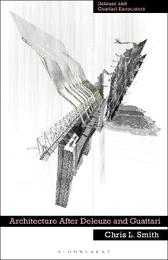
|
Architecture After Deleuze and Guattari
Hardback
Main Details
Description
This study illuminates the complex interplay between Deleuze and Guattari's philosophy and architecture. Presenting their wide-ranging impact on late 20th- and 21st-century architecture, each chapter focuses on a core Deleuzian/Guattarian philosophical concept and one key work of architecture which evokes, contorts, or extends it. Challenging the idea that a concept or theory defines and then produces the physical work and not vice versa, Chris L. Smith positions the relationship between Deleuze and Guattari's philosophy and the field of architecture as one that is mutually substantiating and constitutive. In this framework, modes of architectural production and experimentation become inextricable from the conceptual territories defined by these two key thinkers, producing a rigorous discussion of theoretical, practical, and experimental engagements with their ideas.
Author Biography
Chris L. Smith is Professor of Architectural Theory at The University of Sydney, Australia.
ReviewsChris Smith's excellent new book traces the emergence, trajectory and projection of D&G's thought, explored in and through its connections to architectural theory and practice. We're brought quickly into this world, with its complexities and lineages, but this is no regular family history. Smith's writing is engaging and detailed, careful and speculative, and provides a significant addition to work on D&G. * Stephen Walker, Professor of Architectural Humanities, University of Manchester, UK * A sharp and impactful book. This is creative engagement with Deleuze in the best sense. A handbook to inspire and spark the conceptual imagination of architects and art practitioners. It does this while sketching out aspects of a theoretical framework often able to convincingly explain what it is architects do. * Guillaume Collett, Research Fellow, Centre for Critical Thought, University of Kent, UK * In this rich, rigorous, and original work, Chris Smith engages architecture's own multi-dimensionality to traverse the terrain for thinking, sensing, and making opened up by Deleuze and Guattari. The illuminations that result - Ruskin's edible stones mapping the author's thoughts on transversality, for example - are at once marvelously concrete, revelatory - and profoundly generative. * Lily Chi, Associate Professor of Architecture, Cornell University, USA *
|